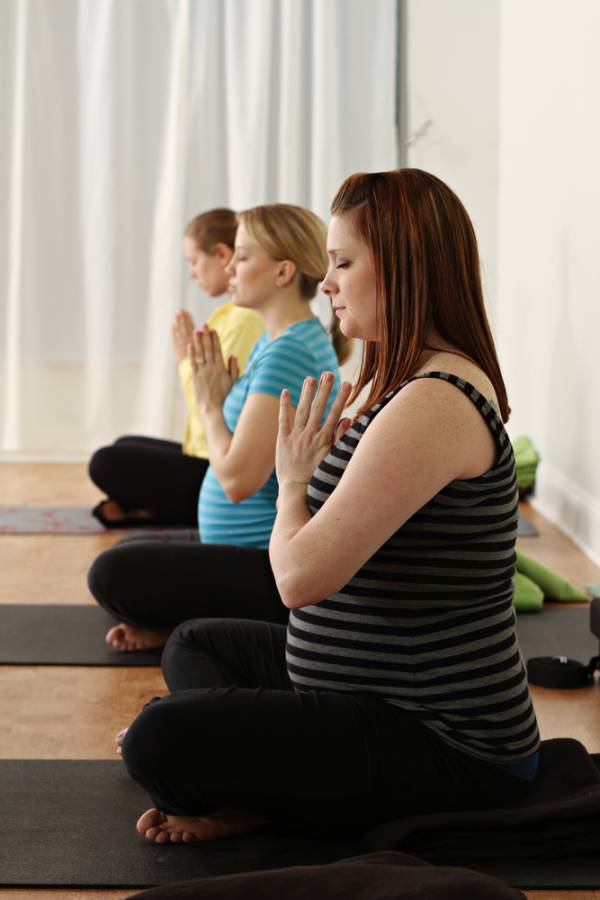BirthFIT is my business, my practice, and my lifelong passion. As I mentioned in a previous article on Breaking Muscle, chiropractic, nutrition, and fitness are the foundational pillars of BirthFIT. Being physically fit to take on birth is part of the responsibility every woman should acknowledge and accept when pregnant. On top of being well conditioned and strong enough to lift objects in your daily life, I want BirthFIT women to be comfortable and familiar with movement.
Fitness is crucial. You need to have the stamina and the strength to endure birth. Likewise, game-time decision making skills are crucial tools to develop so you can respond with different positions, as your body is responding to the actual birth process. And not only is a healthy fitness level optimal for the mother, but also the infant. These babies often display a healthier birth weight and score higher on tests of general intelligence and coordination skills.
There is a lot of debate about exercise during pregnancy. Much of the questioning surrounds the physiological changes that occur within the woman’s body. Yes, as women, our bodies do undergo physiological changes. However, women are designed for this task. A woman’s cardiovascular system adapts to the increased metabolic needs. The musculoskeletal system changes in response to certain hormones, and mechanical alterations occur due to an altered centered of gravity. Women’s bodies innately know what to do and how to handle pregnancy.
In the past, the medical world has advised that a pregnant woman not increase her heart rate above 140bpm and participate in no vigorous amounts of exercise. I could find no research to support the claim of 140bpm. In fact, amongst the research, I found the underlying consensus is that the topic of pregnancy and fitness needs more studies conducted.
 As a healthcare practitioner, I encourage an all around functional fitness routine. Maintaining balance, not only in your life but also in your fitness training, is desired. Endurance training, as in running, rowing, or swimming, is great preparation for the mental capacity and endurance required during labor and delivery. Strength training that utilizes functional movements and Olympic weightlifting is preferred so that a woman knows how to pick up her child properly. Gymnastics-type bodyweight movements are beneficial so that a woman can actually play with her child and orient herself well in space. And yoga poses are ideal to quickly rejuvenate the body, alleviate minor discomfort, and provide a comfortable meditation position.
As a healthcare practitioner, I encourage an all around functional fitness routine. Maintaining balance, not only in your life but also in your fitness training, is desired. Endurance training, as in running, rowing, or swimming, is great preparation for the mental capacity and endurance required during labor and delivery. Strength training that utilizes functional movements and Olympic weightlifting is preferred so that a woman knows how to pick up her child properly. Gymnastics-type bodyweight movements are beneficial so that a woman can actually play with her child and orient herself well in space. And yoga poses are ideal to quickly rejuvenate the body, alleviate minor discomfort, and provide a comfortable meditation position.
Numerous studies do show that a healthy, fit mom produces a healthy, fit baby. A study conducted in February 2011 found that mothers who exercised before and during pregnancy significantly decreased their chances of gestational diabetes. In 2002 at the annual meeting for the Society for Maternal-Fetal Medicine, Dr. Tanya K. Sorensen stated that vigorous exercise during pregnancy appears to reduce the risk of preeclampsia. Lastly, Dr. James Clapp found that not only does exercise decrease the time of labor but also decreases the need for interventions.
Whether you have been running marathons, surfing competitively, or training CrossFit-style, I do not see any problem with you continuing the exercise you love to do throughout your pregnancy. Yes, you will have to adapt your training and make nutritional changes. By maintaining your fitness and continuing to move, however, you are offering your baby an optimal environment in which to thrive.
Tips to Remember:
- Hydration before, during, and after workouts is important.
- Be able to carry on a conversation during your workout.
- There’s no need to PR or set world record times.
- Treat each day as its own.
- If you don’t feel like working out, go for a walk.
Photos courtesy of Shutterstock.






